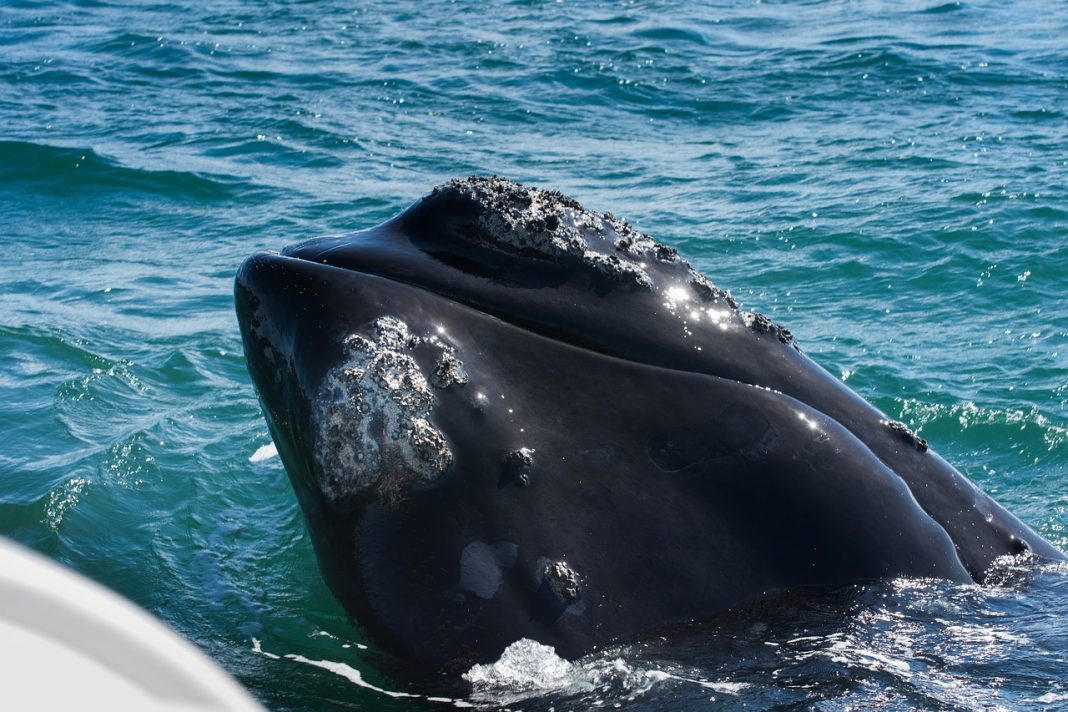The North Atlantic right whale has the unfortunate distinction of being named by the whaling industry because it was the “right whale” to hunt. It was simple to spear, and after death, it floated, whereas other species sank. Because of these traits, this species got hunted to near extinction, and it is still fighting to recover 65 years after the killing of North Atlantic right whales ended.
By the early 1890s, commercial whalers had driven right whales to extinction in the Atlantic. Human interactions remain the most significant threat to this species, even though whaling is no longer a problem. Their population has decreased by about 26% in the past decade, from high estimates of up to 21,000 in the 1920s. Because the population has got reduced to such hazardous levels, only 356 North Atlantic right whales are left on the globe.
The study, published in the journal Oceanography, examined North Atlantic right whale tracking data from the 1980s and found that the species decreased in the Gulf of Maine around 2010. Warm slope waters reached the region due to climate-driven changes in the Gulf Stream, making it a less appropriate feeding habitat for the endangered North Atlantic right whale population. By the middle of the decade, right whales had migrated their late spring/summer feeding grounds from the Gulf of Maine and the western Scotian Shelf to St. Lawrence.

Why is Warm Water Troubling?
According to the researchers, warming oceans reduced copepods in the Gulf of Maine, which are a significant food source for whales. Compared to the preceding decade, this decreased food resulted in a 32% decrease in female births.
Since 2015, researchers have recorded an unusually high number of right whale sightings in the Gulf of St. Lawrence. Lower temperatures mean the whales have more food and are more vulnerable to vessels and fishing gear. During 2017, the US National Marine Fisheries Service recovered 17 dead suitable whale bodies, 12 discovered in the Gulf of St. Lawrence.
The researchers are urging government authorities in the United States and Canada to “adopt more dynamic management plans” to aid in the conservation of whales, including more detailed surveillance of ocean conditions and whale sightings.
Other Threats Explained
Entanglements in fishing gear and accidents with ships are the two most severe dangers to North Atlantic right whales. New threats, such as seismic airgun blasting, a method of searching for oil and gas deep beneath the seafloor that produces one of the loudest human-made sounds in the ocean, put the species at even greater risk.
Ship Collision
The second most significant cause of mortality for right whales is collisions with ships. Right whales are difficult to identify since they are sluggish and lack a dorsal fin. Ships cannot move to avoid them at average operating speeds because the right whales swim too slowly. Right whales are in great danger of being struck by ships, which can result in fatal injuries.
Fishing Gear
One of the most common causes of right whale damage and death is entanglement in the fixed fishing gear used to collect lobster, shellfish, and bottom-dwelling species. Each year, an estimated 100 right whales become entangled in gear from the United States and Canada, with 83% of them becoming entangled at least once. Dragging lines linked to heavy fishing gear slows them down, making it harder to swim, breed, and feed. It also puts them at risk of drowning.
FACT: Three of the eight dead right whales discovered in Canada in June and July 2019 were confirmed to have perished due to ship strikes.
Possible Methods and Recommendations to Help Right Whale Survive
- When the right whales are present, implement effective fisheries closures to eliminate risks.
- Long-term financing and capacity development for research, monitoring, and risk reduction is required.
- Seasonal speed limitations should get implemented in places where the right whales are known to congregate, and short-term restrictions should get implemented in other regions if they get discovered.
How Can You Help? NOAA Fisheries Guidelines
Report If You See One
Right whale sightings should get reported to the US Coast Guard via channel 16 or the Whale Alert app from anywhere. Report a Sighting of a Right Whale by calling (866) 755-6622 or 877-942-5343.
Stay Away
According to NOAA Fisheries, approving or staying within 500 yards (1,500 feet) of a right whale is illegal. Other watercraft, such as surfboards, kayaks, jet skis, and boats and airplanes, are subject to these restrictions.
Report Any Marine Life That Is In Danger
An ill, injured, entangled, stranded, or dead animal should get reported so that qualified rescuers and scientists are aware of the situation and can intervene
Get Involved and Educated
Attend public meetings and express your thoughts with members of the several environment protection teams who represent your community.

Fun Facts of Right Whale
- North Atlantic right whales may reach a length of 52 feet (15.8 meters) and a weight of 63.5 metric tons.
- Callosities are rough, white spots on the skulls of North Atlantic right whales that are distinctive to each individual.
- In the Atlantic, right whales can live up to 70 years. After they have died, researchers examine their ear wax to calculate their age.
Bottom Line
In terms of protecting the North Atlantic right whale, WWF has achieved significant milestones. However, collisions in the US and Canadian seas continue to be a serious conservation issue for the species. To avoid a disastrous decline, the US and Canadian governments must act quickly. If nothing changes, the Atlantic Ocean may witness the first significant whale extinction in millennia.



